HLA matching
HLA (human leukocyte antigen) matching is required for some treatments. However, the stem cells found in umbilical cord blood are adaptable and don’t require matching to be effective.
Our immune systems protect us from harmful bacteria and other outside viruses, while also destroying any dangerous or foreign cells within the body. In an allogeneic transplant, a matched donor has cells similar to the patient, which reduces the chance for graft rejection – a condition where the patient’s immune system attacks donated cells.
Mismatched cells may also cause graft-versus-host disease, where the donated cells create their own immune system. This new system attacks the old system, and may cause serious problems for the patient.
Matching donors
When it comes to transplants, the most effective way to integrate new cells into the body is by HLA (human leukocyte antigen) matching. HLAs are proteins covering the surface of most cells – these proteins dictate an individual’s tissue type. Each parent donates a set of HLAs to their children, and doctors attempt to match these HLA types before a stem cell transplant.
Matches are rated on a scale from 1 to 6, since there are six total HLA antigens.
When a donor is a 6 out of 6 match, there is a much smaller chance for any graft-related disease, and the patient also has a lower chance of infections. In bone marrow transplants, matching is extremely important. Donor matching with less than 5 out of 6 HLAs won’t work for a stem cell transplant using bone marrow.
However, cord blood transplants don’t require exact matches, so an HLA score of less than 5 out of 6 often works just as well. Doctors are always finding new treatment methods for patients in need of a stem cell transplant, including using other antigens found in the body for a more exact match.
Finding an HLA match
Since there are thousands of possible HLA antigen combinations, doctors usually start with immediate family when looking for a matching stem cell donor. The chance for an exact match with siblings from the same parents is about 1 in 4. If the patient doesn’t have siblings, or if the siblings aren’t an exact match, doctors will look at HLA matches with parents and extended family. If none of these options are available, the medical team will go to the general public, looking for HLA matches on an internet database.
These databases, called stem cell registries, allow doctors to search for matches from donors all around the world, greatly increasing the chances of an exact stem cell match. As more stem cells are donated into these registries, patient’s options become greater.
Donating cord blood is one of the best ways to add to these growing registries. With your child’s donation, you may save a life on the other side of the world, or you could possibly aid researchers in finding new treatments for future patients. Donating cord blood is free, but you only have one chance to store it – right after your child is born.

